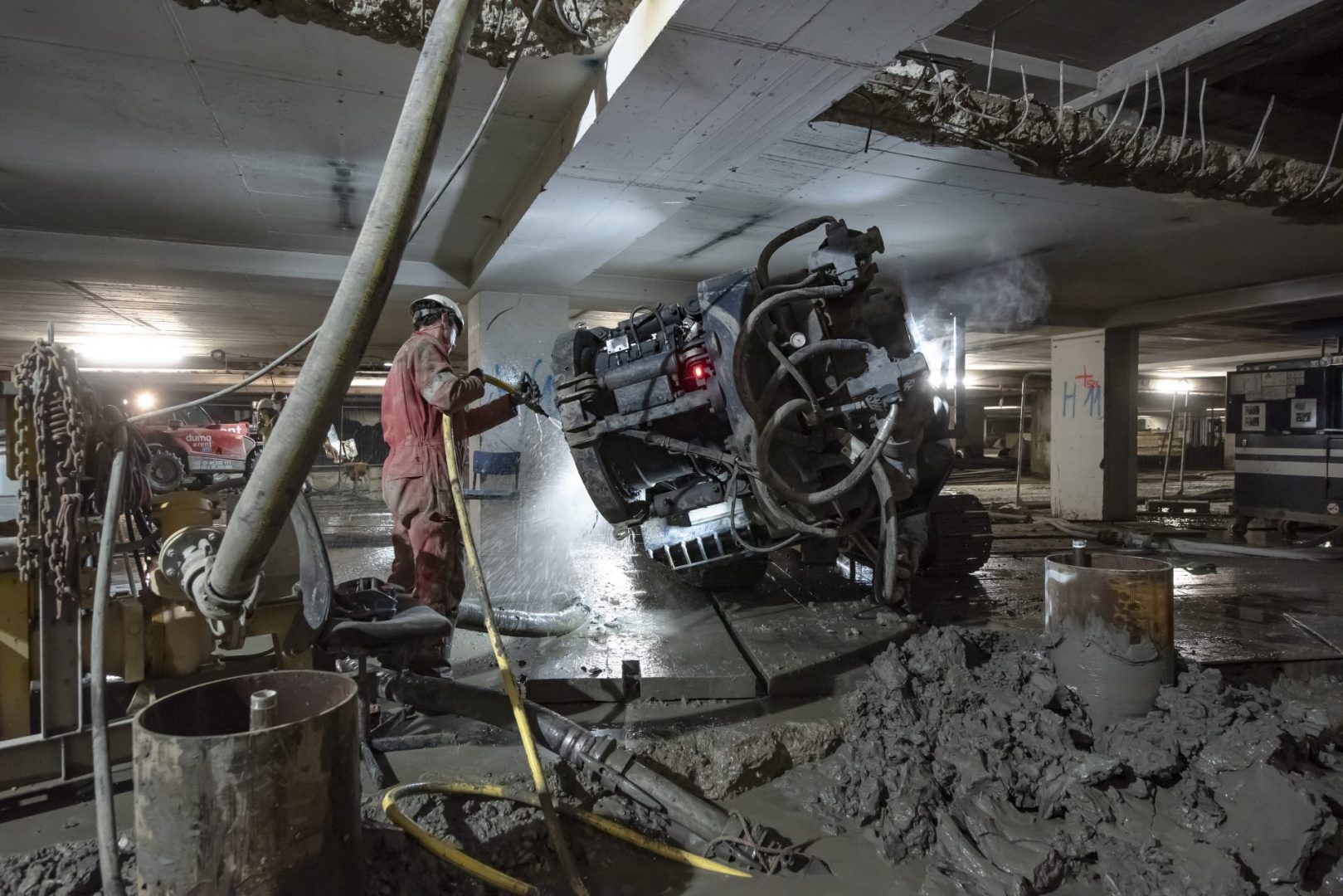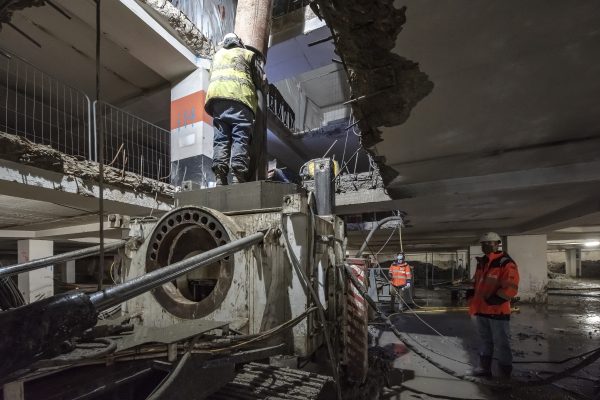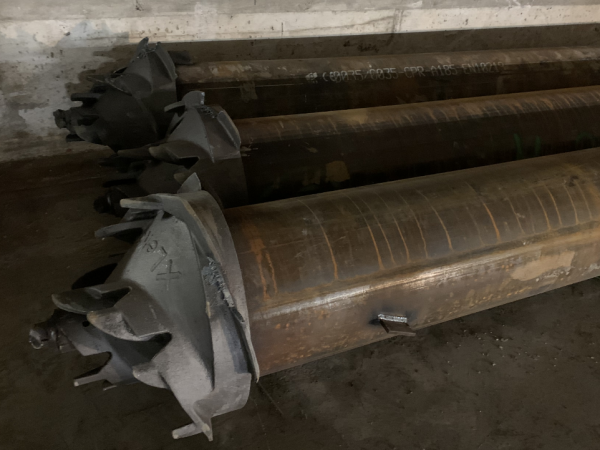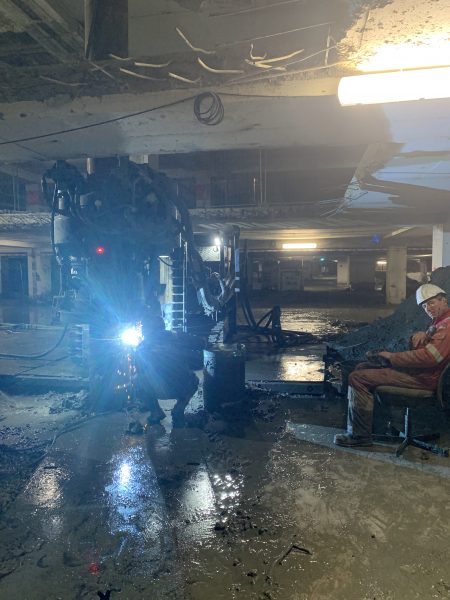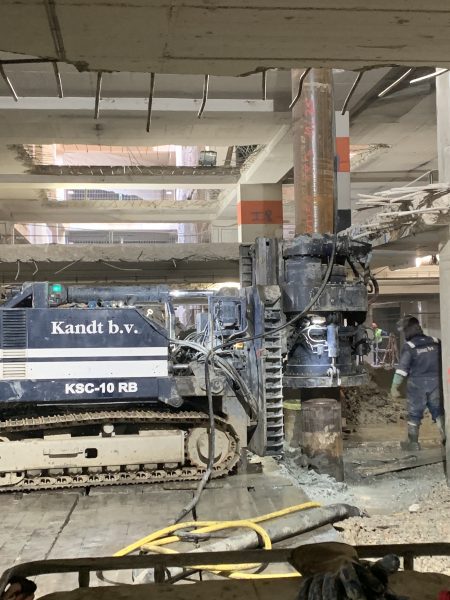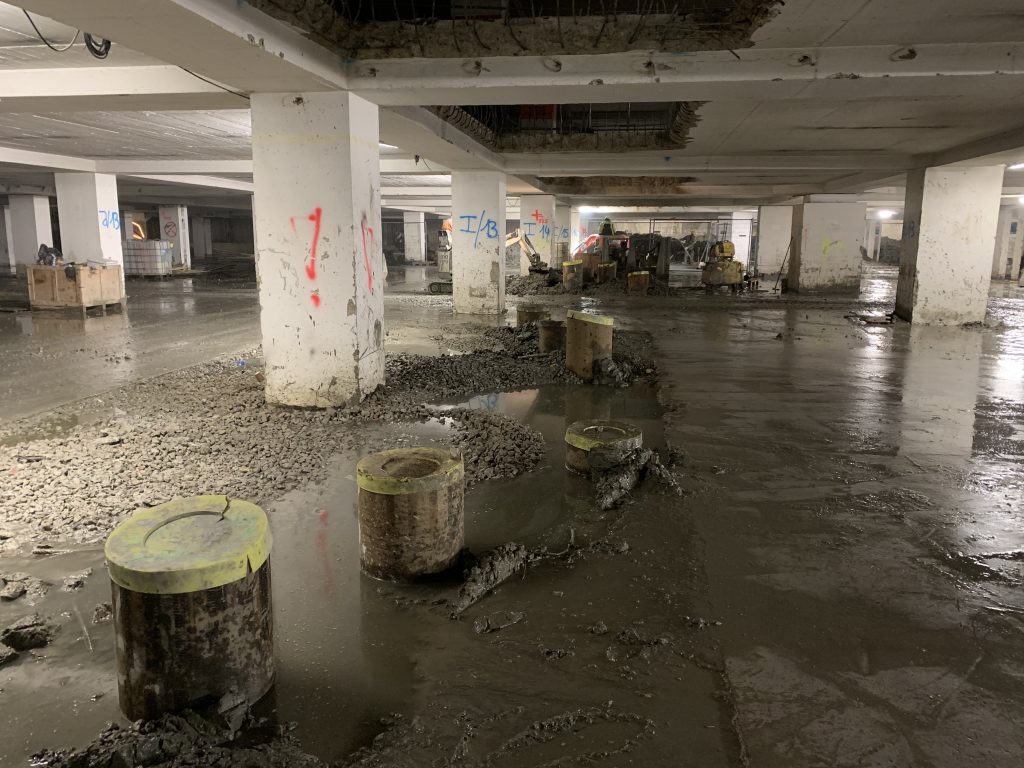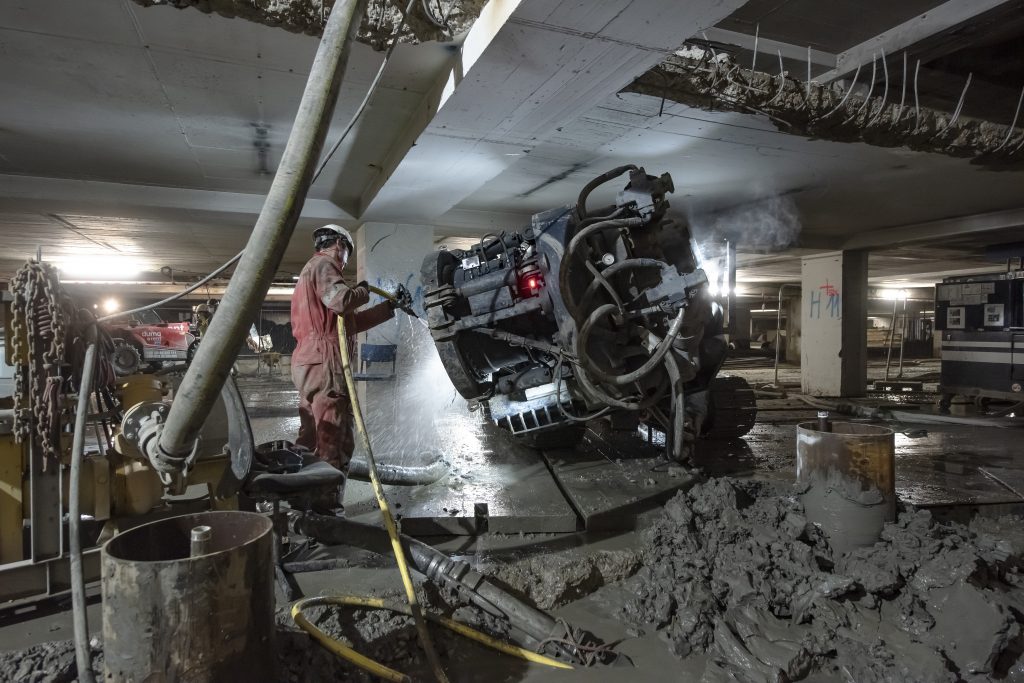Now that the towers have been fully dismantled and only the cores remain, the plinth is also being further dismantled. The structure of the underground floors (-1 to -5) is being retained. At the same time the new support structure for ZIN is being developed. Because the new building connects the two towers with a central volume, the existing foundations are inadequate. Therefore, Open Minds, the construction consortium of CFE, BCP, Van Laere and VMA, has already installed 99 additional pile foundations that form the basis by groups of a foundation footing for the new support columns of ZIN. This creates new supports for the unified building, in addition to the existing foundations.
Pile foundations are deep foundations that transfer the weight of the building to the more stable (and deeper-lying) layers of the substrate by means of piles. This involves an ingenious process for which Open Minds hired a specialised company. They work with two machines that each drill approximately one pile foundation per day from floor -5. Due to the limited space on the underground floors, this involves a unique procedure. The pile foundations, hollow metal pipes with a diameter of approximately 50 cm and a final length of 36 metres, are delivered in sections 6 of metres long and welded together underground.
Wondering how this works in practice? We explain the process in five steps, from pile foundation to foundation footing, with the help of a few photos.
